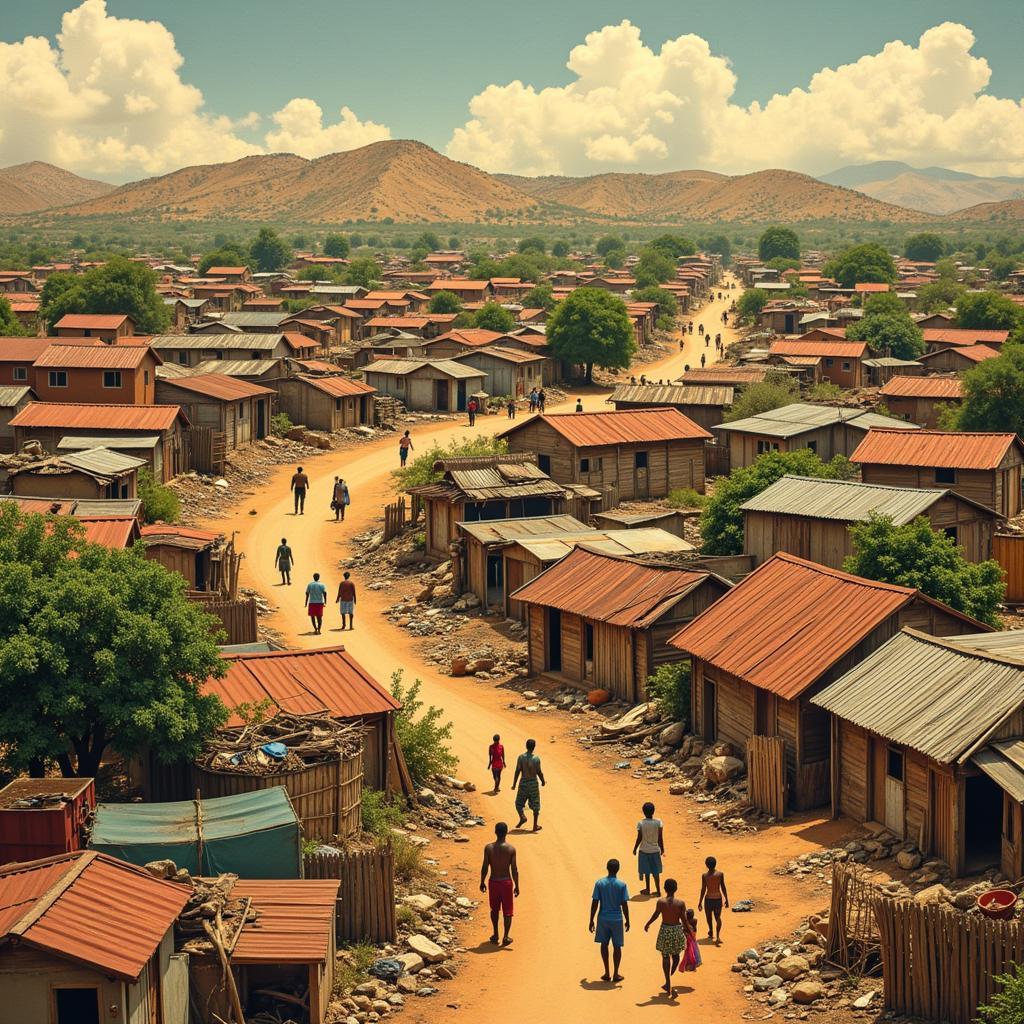A Glimpse into African Hut Interiors: Tradition Meets Modernity
From the sun-baked plains to verdant forests, the African landscape is dotted with a diverse array of traditional dwellings. Among these, the iconic “African hut” stands as a testament to the continent’s rich cultural heritage and architectural ingenuity. But what lies beyond the often humble exteriors of these structures? Let’s step inside and uncover the fascinating world of African hut interiors, where tradition seamlessly blends with modernity.
A Tapestry of Cultures and Climates
The design and décor of African hut interiors vary significantly across the continent’s diverse regions and ethnic groups. Each element, from the materials used to the layout and decoration, reflects the unique cultural practices and environmental adaptations of its inhabitants.
For instance, in the arid regions of East Africa, the Maasai people construct their huts, known as “enkangs,” using mud, sticks, and cow dung. The interiors are typically divided into separate sections for sleeping, cooking, and socializing, with low ceilings to retain heat during chilly nights. In contrast, the Himba people of Namibia build their huts, called “onganda,” using mud and a mixture of cow dung and ochre, which gives the walls a distinctive reddish hue.
 African Hut Interior Furniture
African Hut Interior Furniture
The Heart of the Home: Functionality and Symbolism
Despite the variations, several common threads run through the tapestry of African hut interiors. One such element is the central hearth, often considered the heart of the home. It serves not only as a source of warmth and light but also as a focal point for family gatherings, storytelling, and spiritual rituals.
Another prominent feature is the use of natural and locally sourced materials. From the thatched roofs made of grass or palm leaves to the walls adorned with mud, clay, or dung, these materials provide excellent insulation, regulating temperature and ensuring a comfortable living environment.
A Fusion of Old and New: Evolving Aesthetics
While traditional designs and materials remain prevalent, African hut interiors are not frozen in time. As lifestyles evolve and external influences seep in, modern elements are gradually finding their place within these age-old structures.
Today, it’s not uncommon to find solar panels discreetly integrated into thatched roofs, bringing electricity to remote villages. Similarly, mobile phones and radios have become commonplace, connecting these traditional dwellings to the outside world.
 Modern African Hut Interior Decor
Modern African Hut Interior Decor
Stepping into a World of Wonder
Exploring the interiors of African huts offers a captivating glimpse into a world where resourcefulness, resilience, and a deep connection to nature are intertwined. These humble dwellings, far from being relics of the past, continue to evolve, reflecting the dynamism and adaptability of African culture. They stand as a testament to the enduring power of tradition, even as it embraces the winds of change.
FAQs: Uncovering the Intricacies of African Huts
1. What is the average size of an African hut?
The size of an African hut varies greatly depending on the region and ethnic group. However, they are generally smaller than modern homes, averaging around 10 to 15 square meters.
2. Are African huts still built today?
Yes, African huts are still built today, particularly in rural areas. While some communities are adopting modern building materials and techniques, many continue to rely on traditional methods and materials, preserving their cultural heritage.
3. How long does it take to build an African hut?
The construction time for an African hut can range from a few weeks to several months, depending on the size, complexity, and the availability of materials and labor.
Delving Deeper: More Insights into African Culture
For those eager to further explore the rich tapestry of African life, our website offers a treasure trove of articles. Discover the vibrant world of African hut architecture or tantalize your taste buds with a collection of delicious African Christmas recipes.
Need More Information?
Our dedicated team at “African Life” is always happy to assist you on your journey of discovery. For any inquiries or assistance, please don’t hesitate to contact us:
Phone: +255768904061
Email: kaka.mag@gmail.com
Address: Mbarali DC Mawindi, Kangaga, Tanzania.
We’re available 24/7 to answer your questions and provide further insights into the captivating world of African culture.

